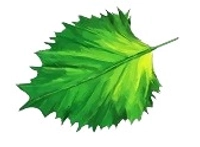
Joginder Nursery
Product details
Thuja Orientalis, also known as Oriental Arborvitae or Chinese Arborvitae, is an evergreen coniferous tree that is highly valued for its attractive, dense foliage and its ability to thrive in various climates. This slow-growing tree can reach a height of up to 10-20 feet when fully mature, making it an excellent choice for hedging, landscaping, or as a standalone ornamental tree in gardens and parks. Its fan-shaped, scale-like leaves are vibrant green, turning a rich bronze color during the winter, adding seasonal interest to any landscape.
Low Maintenance: Thuja Orientalis is a hardy tree that requires minimal care once established. It is drought-tolerant and can adapt to various soil types, making it an ideal choice for busy gardeners or those new to plant care.
Privacy and Windbreak: Due to its dense foliage, Thuja Orientalis is commonly used as a natural privacy screen or windbreak. When planted in rows, it creates a lush, evergreen barrier that enhances the privacy and tranquility of outdoor spaces.
Aesthetic Appeal: The tree's elegant, pyramidal shape and evergreen foliage provide year-round beauty to any garden or landscape. Its vibrant green color and distinctive form make it a popular choice for ornamental purposes.
Air Purification: Like many evergreens, Thuja Orientalis helps improve air quality by filtering pollutants and releasing oxygen, contributing to a healthier environment.
Light: Thuja Orientalis thrives in full sun to partial shade. It prefers at least 4-6 hours of sunlight daily for optimal growth, but it can also tolerate light shade.
Watering: Water the tree regularly during its first year to help establish a strong root system. Once established, it becomes drought-tolerant and requires only occasional watering during prolonged dry periods.
Soil: This tree prefers well-drained, slightly acidic to neutral soil. It can tolerate a range of soil types, including sandy, loamy, and clay soils.
Pruning: Prune Thuja Orientalis in late winter or early spring to maintain its shape and remove any dead or damaged branches. Regular pruning helps encourage dense growth and keeps the tree looking tidy.
Fertilization: Feed the tree with a balanced, slow-release fertilizer in early spring to support healthy growth. Avoid over-fertilizing, as it can lead to excessive foliage growth at the expense of root development.
Browning Foliage: Browning or yellowing of the foliage can be caused by drought, poor drainage, or exposure to harsh winter winds. Ensure the tree is well-watered and protected from strong winds during the winter months.
Pests: Thuja Orientalis can sometimes be affected by spider mites, aphids, or bagworms. Inspect the tree regularly and treat any infestations with appropriate insecticides or natural remedies like neem oil.
Root Rot: Overwatering or poorly drained soil can lead to root rot, causing the tree to decline. Ensure the soil is well-drained and water only when necessary.
Winter Burn: This occurs when the foliage turns brown due to cold, dry winter winds. Protect the tree with burlap or other coverings during harsh winter conditions to prevent damage.
Please Note: Images are for reference purposes only. Actual product may vary in shape or appearance based on climate, age, height, etc. The product is replaceable but not returnable. Plants will be delivered in black nursery poly bag or pot unless until mentioned on the product page.
Similar products